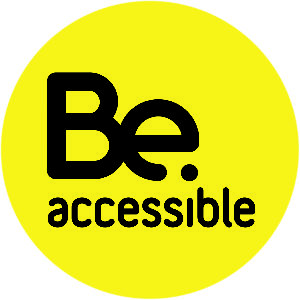 A presentation by the Be.Institute to the Waitemata Local Board indicated “over 800,000 New Zealanders have a disability of some kind, and this does not include older people (of which we will all be one!), parents with young children and people with temporary injuries or illnesses. In a 2005 study, it was estimated that approximately 42% of disabled people were not in any form of employment, compared to 23% of non-disabled New Zealanders. The opportunity cost of greater employment and education for disabled people is estimated at around NZ$11.7b.” Following this presentation the Board, through its Plan and championed by board member Christopher Dempsey, made a commitment to becoming an Accessible Local Board.
A presentation by the Be.Institute to the Waitemata Local Board indicated “over 800,000 New Zealanders have a disability of some kind, and this does not include older people (of which we will all be one!), parents with young children and people with temporary injuries or illnesses. In a 2005 study, it was estimated that approximately 42% of disabled people were not in any form of employment, compared to 23% of non-disabled New Zealanders. The opportunity cost of greater employment and education for disabled people is estimated at around NZ$11.7b.” Following this presentation the Board, through its Plan and championed by board member Christopher Dempsey, made a commitment to becoming an Accessible Local Board.
Recognising the fact that significant numbers of ward residents had particular accessibility needs, and working with Be Institute, the Board created an Accessibility Plan that focuses on Accessible Communications, Accessible Environments and Accessible Culture. Ensuring that Council communications are accessible, for example, to Deaf citizens goes a long way towards ensuring that those marginalised because of their accessibility needs can feel part of the Council process, and can have some say about them. This spirit lies behind making sure our Council spaces and environments are accessible, through providing good access for those in wheelchairs, or forthose who are blind so that they can attend Local Board meetings. But accessibility also lies in ensuring that Council officers and Board members also work towards creating a culture that actively recognises and works towards eliminating accessibility barriers in each and every community project Council undertakes.
Creating Board agendas and minutes (not the most exciting thing in the world sometimes!) in accessible formats is the first step in ensuring our communications are available to low-sighted and blind citizens for example. This means that they will have the ability to understand what subjects the Board considers at its monthly meetings, and how the Board voted on those subjects. Armed with this understanding, low-sighted and blind citizens can then have an opinion about those subjects by appearing in public forum,or by speaking to Local Board members.
Council officers are currently working through a plan to make one of the Board’s meeting spaces accessible which will enable citizens who use wheelchairs to be able to easily attend Local Board meetings held in that space. This will permit these citizens the ability to directly participate in meetings, by appearing in public forum at an official Board meeting, or by contributing their views in a Board hosted workshop.
Creating a Council culture that actively considers accessibility needs early in project planning is a more difficult task, but the Board is persistent in asking questions of officers at workshops and presentations about how accessible a particular project is. Asking questions prompts awareness, and changes behaviours, so Board members are consistently asking questions, and it is pleasing to note that Council officers are starting be more proactive in considering more thoughtfully accessibility needs within projects.
Through creation of an Accessibility Plan, the City Vision -led Waitemata Local Board is working hard to help create the world’s most liveable city. In the next term of Council, we will be working to further this plan, and seeking to engage wider communities in the Ward about how they can play their part in creating a truly accessible Auckland that not only benefits those with accessibility needs, but all residents.

